Genghis Khan Equestrian Statue: Monument of Legend and Legacy
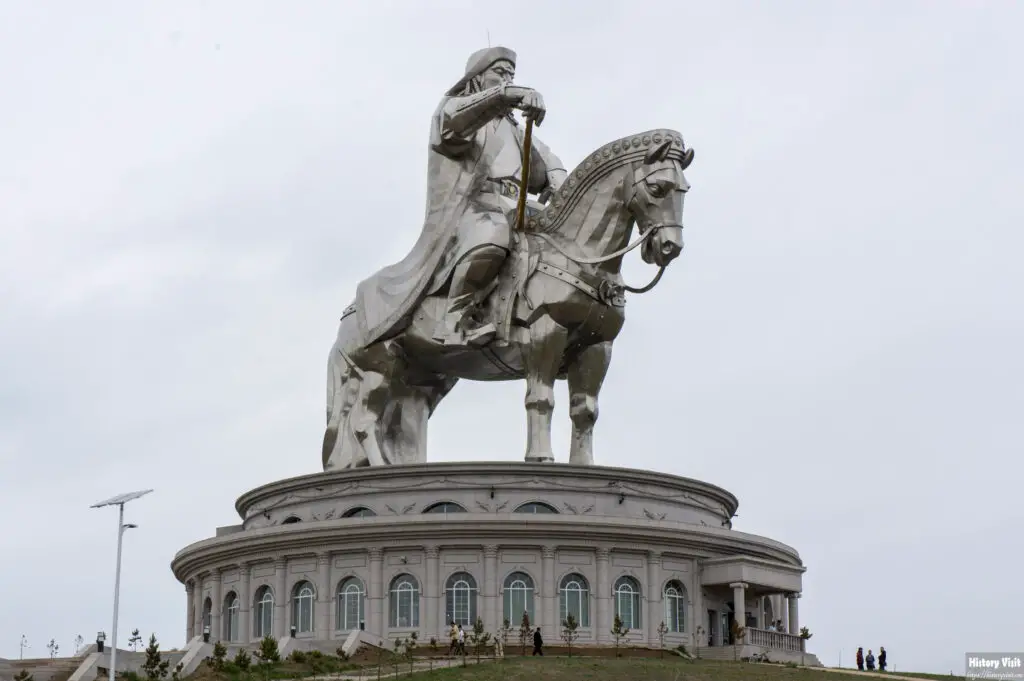
Introduction
The genghis khan equestrian statue is the world’s largest equestrian monument. Rising 40 m above a 10 m pedestal, it dominates the Mongolian steppe. The sculpture honors the legendary founder of the Mongol Empire, Genghis Khan. It blends history, art, and national identity in steel.
This monument was completed in 2008 near Ulaanbaatar. Local sculptor D. Erdembileg and architect J. Enkhjargal designed it. Built for the 800th anniversary of Mongol unity, the statue was placed at Tsonjin Boldog. Legend says Genghis found a golden whip there.
This article explores the genghis khan equestrian statue from design to cultural impact. It covers its mythological roots, engineering challenges, visitor experience, and national significance. Discover how this statue became a symbol of Mongolian pride.
Design & Symbolism of the Genghis Khan Equestrian Statue
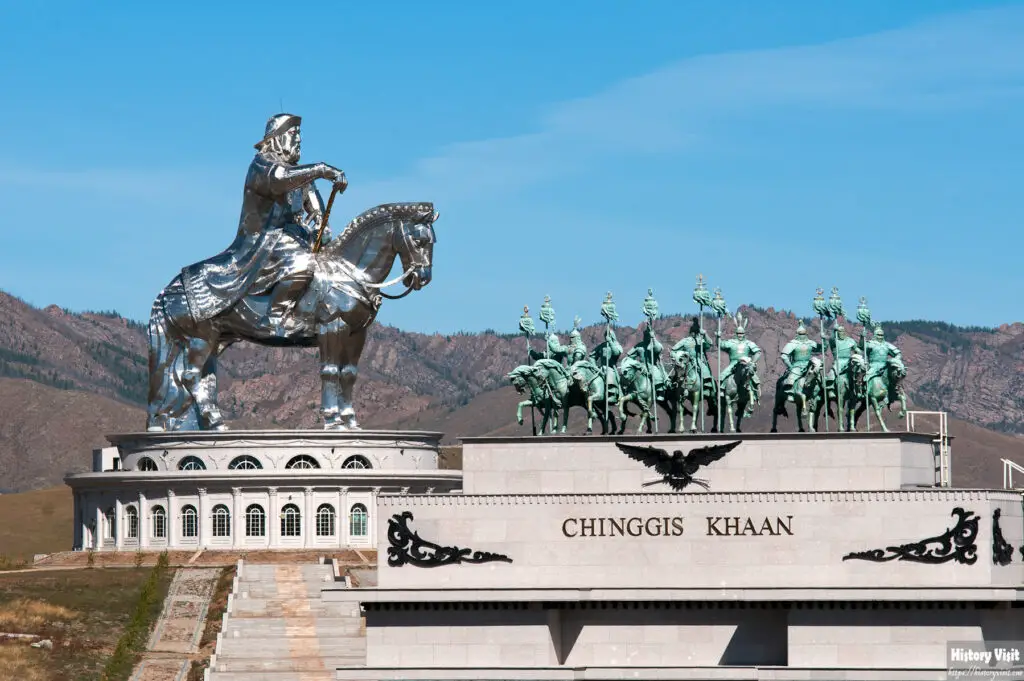
The genghis khan equestrian statue portrays Khan on horseback with a raised whip. The whip references the Tsonjin Boldog legend. The horse stands with energy and command. Khan’s gaze points east toward his birthplace.
The statue is made of stainless steel. It weighs around 250 tonnes. Its surface reflects sunlight and skylight. At night, lights make it glow against the sky.
The pedestal has 36 columns for 36 Khans. They symbolize unbroken dynastic lineage. The base resembles a traditional yurt circle. It merges modern monument with Mongolian heritage.
Visitors enter the base into a museum. It displays artifacts of Mongol history. The building links past and present visually and emotionally. The genghis khan equestrian statue becomes an educational forum.
Engineering & Construction Challenges
Building the genghis khan equestrian statue required precision. The statue’s 40 m height demanded strong structure. Engineers used advanced steel framing inside. They ensured wind resistance and seismic stability.
Each steel plate was shaped by hand. The sections were prefabricated elsewhere. Then, they were transported on roads from Ulaanbaatar. Heavy cranes lifted them into place. The process took careful coordination.
The weight had to be distributed across the pedestal. A secure foundation was poured under sandy soil. Drainage systems were built beneath the base. Weatherproofing protected steel from corrosion.
Because parts of the statue are hollow, visitors ascend inside. They ride elevators and walk staircases to the horse’s head. Safety and ventilation systems were integrated. Even emergency exits were planned.
Visitor Experience & Tourism
The genghis khan equestrian statue welcomes thousands annually. Tourists arrive via a paved road from Ulaanbaatar. Many combine visit with tours of Terelj National Park. The site is especially scenic at dawn and dusk.
Inside, a museum lies beneath the statue. Exhibits show Mongol Empire artifacts and traditional costumes. Visitors can try Mongolian clothing and take photos. Cafes and gift shops add to the experience.
An elevator takes visitors to the horse’s chest. From there, stairs lead to the observation deck in its head. The view offers sweeping panoramas of rolling hills, river valleys, and distant mountains.
On clear days, visitors spot the small statue of Khan’s mother facing east. That statue marks his birthplace direction. It adds a poetic touch to the experience.
Historical & Cultural Significance
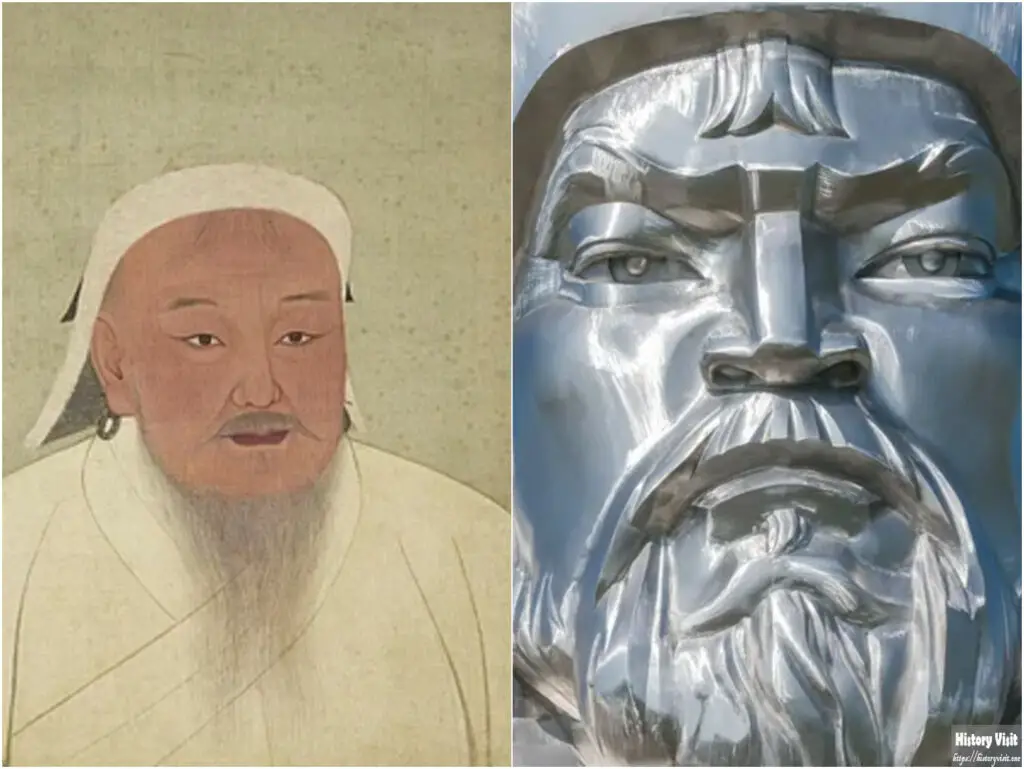
The genghis khan equestrian statue represents Mongolia’s pride and heritage. It was built to commemorate Khan’s empire. For Mongolians, he unified tribes and revived the Silk Road.
Since 2008, the statue has become a national icon. It is often compared to the Eiffel Tower and Statue of Liberty. Mongolian named it one of their modern wonders.
The site hosts cultural events. These include music, archery shows, and ceremonies. National holidays are often celebrated there. The statue grounds serve as living cultural space.
Critics argue Genghis Khan’s legacy is brutal. But the statue emphasizes unity over conquest. It frames him as a nation-builder, not conqueror. The genghis khan equestrian statue fosters national identity.
Artistic Interpretation & Record-Holding Status
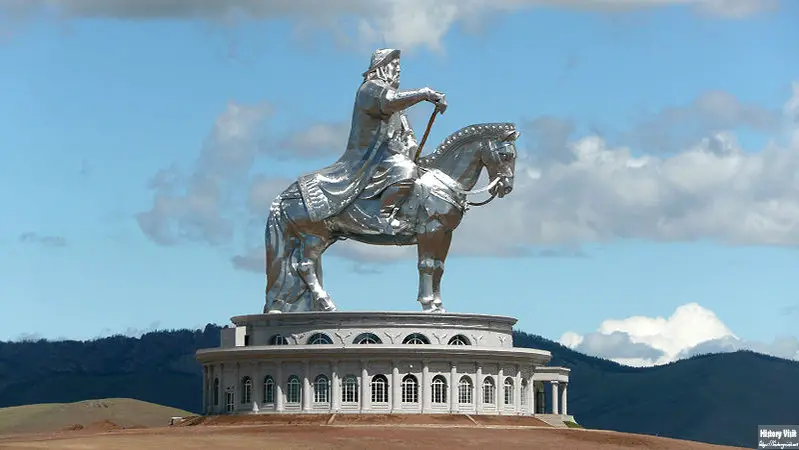
The genghis khan equestrian statue is formally recognized as the tallest equestrian statue. Guinness lists it at 50 m including pedestal. It surpassed previous record holders by wide margin.
Its scale astonishes visitors. Reddit users joke about riding the horse’s “ass” as a stair. People marvel at its engineering feat. It dwarfs even some skyscrapers in impact.
Artistically, Khan appears larger than life. The statue’s daring pose evokes power. The whip held high symbolizes authority and prophecy, referencing Khan’s fortune legend.
Critics suggest more statues have risen since. Still, this one holds symbolic weight. It remains an iconic example of monumental sculpture in modern art and national memory.
Future, Legacy & Global Perception
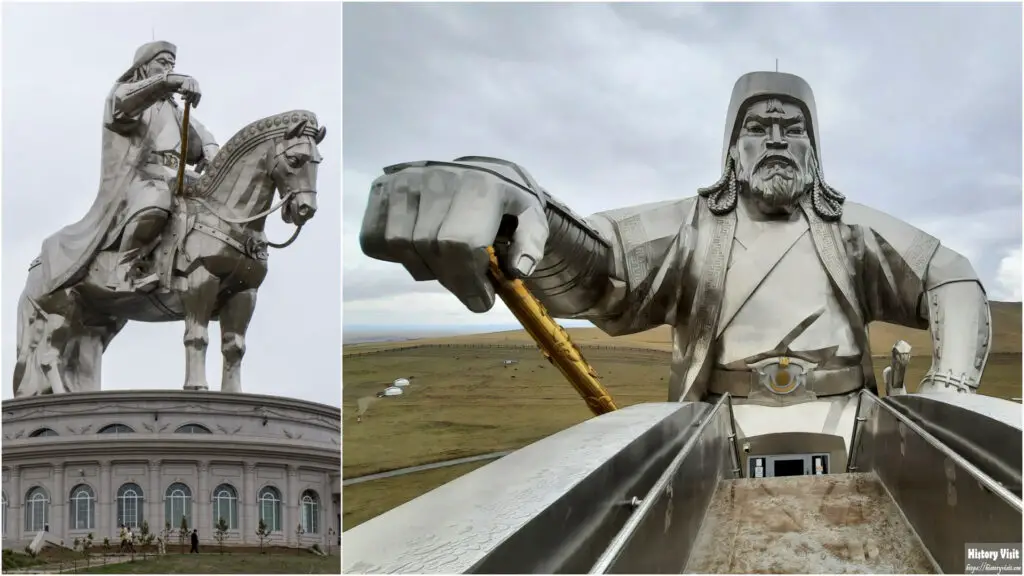
The genghis khan equestrian statue now anchors a cultural tourism complex. Plans include adding more museums, yurt lodging, and themed events. Its appeal grows each year.
International media covers new statues around Mongolia. Some locals argue another giant statue is overkill. Yet, most feel proud of this iconic monument, already a global landmark.
Other artists worldwide reference it in eco-art, patriotism, or giant sculpture discussions. It shows how a modern steel statue can tell ancient stories with modern flair.
Environmental concerns led to use of recyclable steel. The foundation ensures sustainable tourism. Maintenance routines protect the structure for decades. Khan’s legacy, through art and earth, continues.
Conclusion
The genghis khan equestrian statue is more than a monument. It is a living symbol of Mongolian unity, identity, and history. Built with pride and precision, it speaks over centuries.
From myth to steel, the statue fuses tradition with technology. It educates, inspires, and attracts global visitors. It stands as the world’s tallest equestrian tribute and national beacon.
Genghis Khan rides again not across deserts, but on steel in modern Mongolia. For deeper insight into design, myth, and impact, read the full article. Discover the power behind every stainless steel plate and symbolic angle of this modern marvel.


